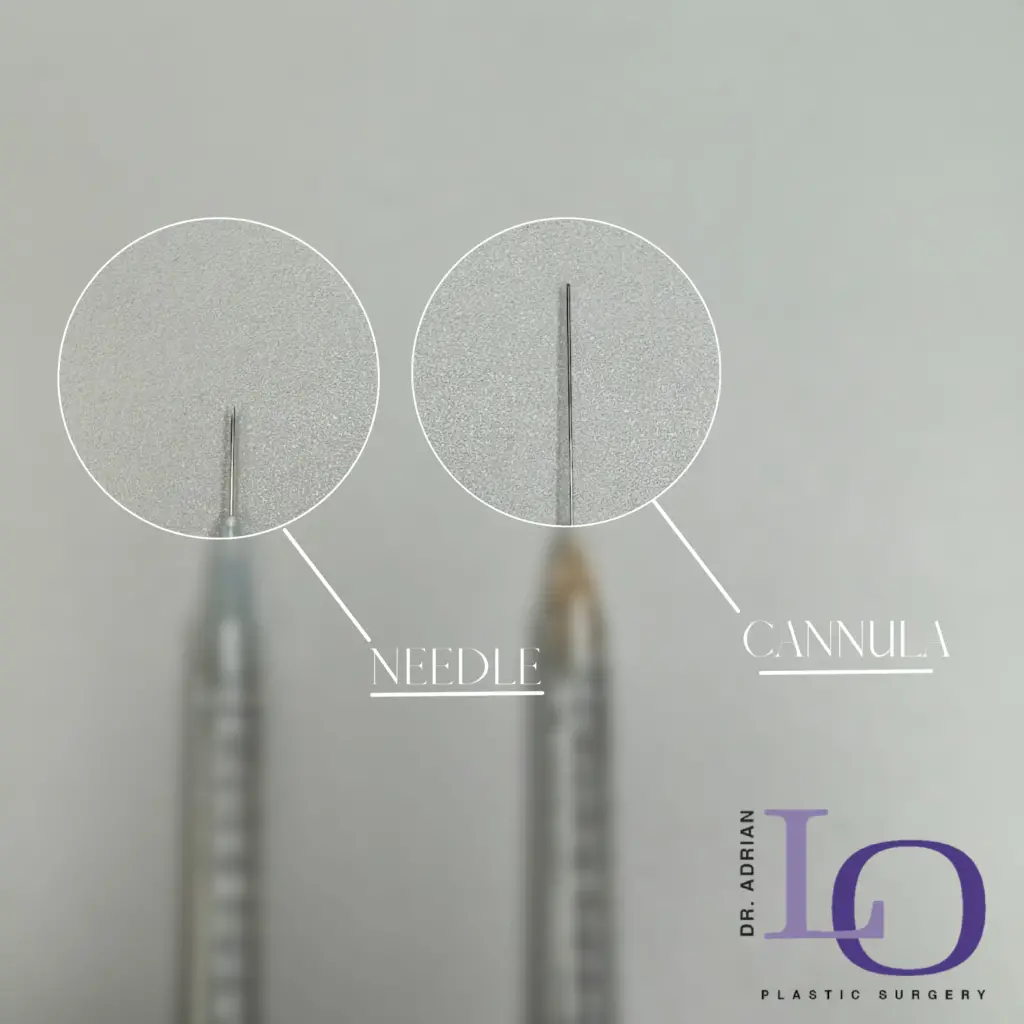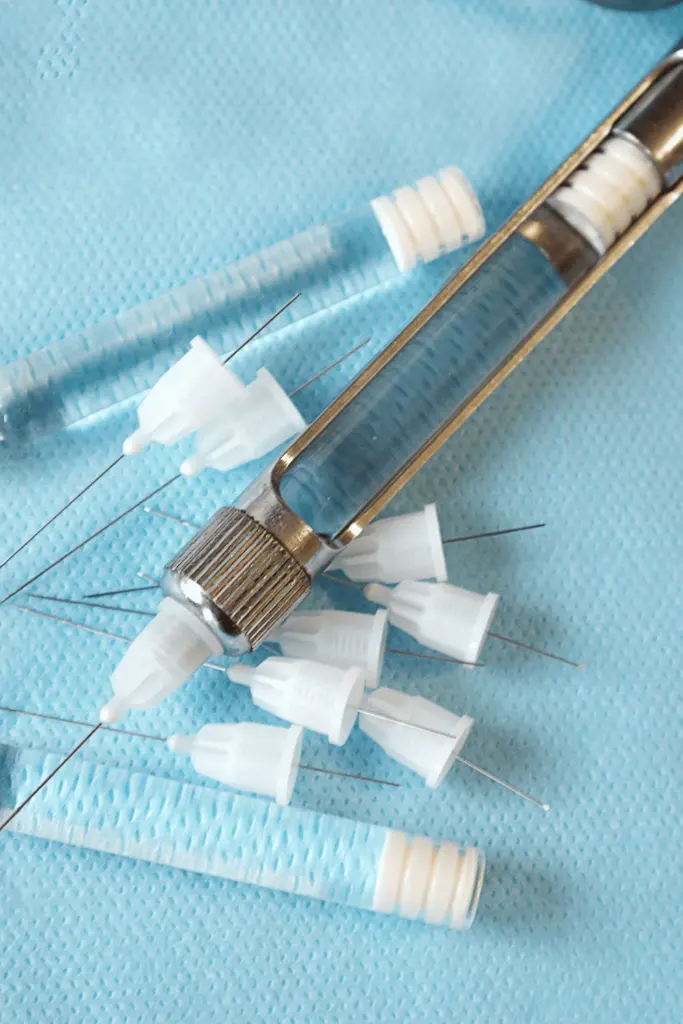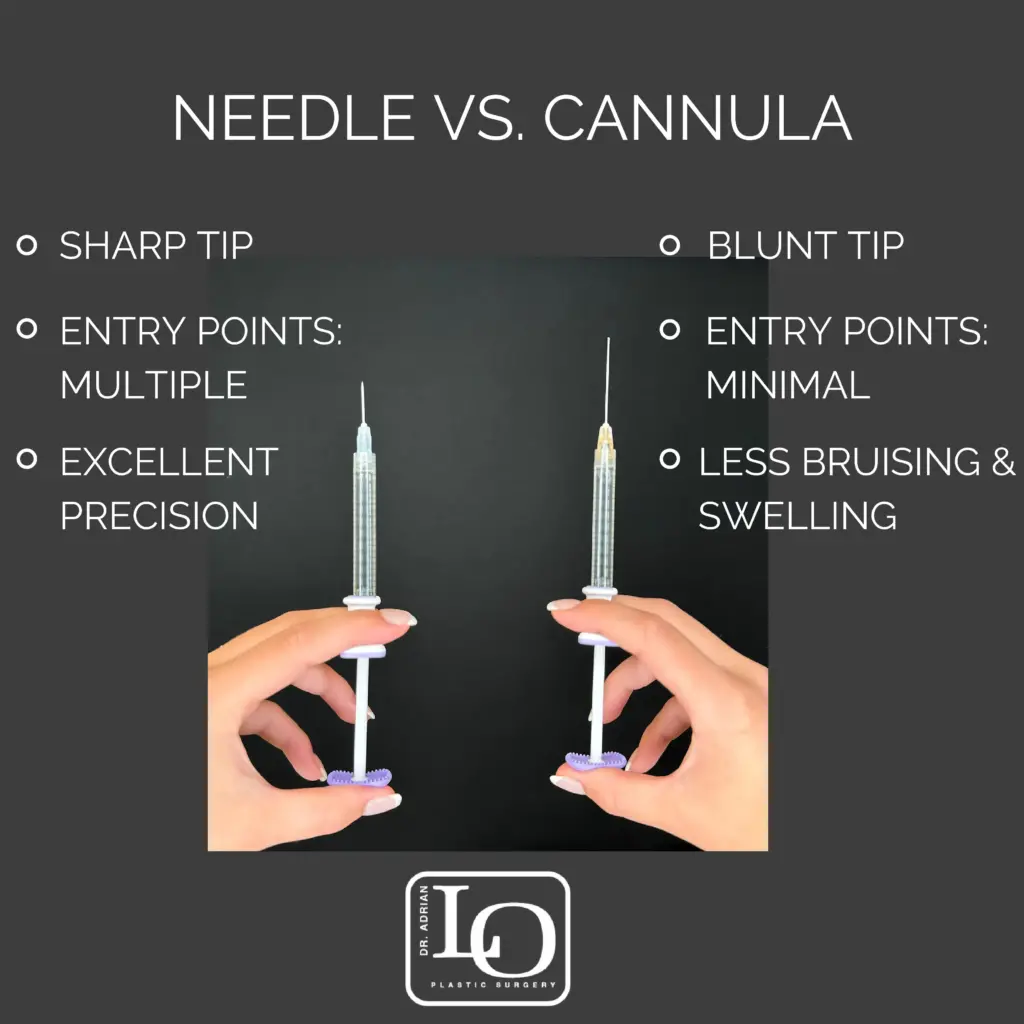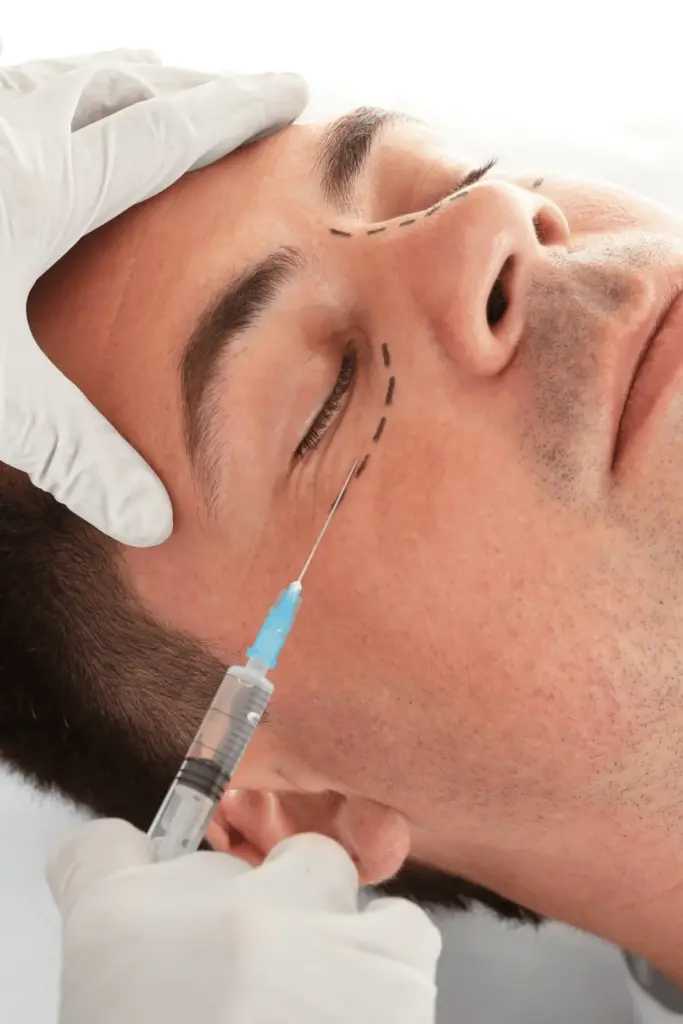Staying informed about the latest techniques and tools is crucial for both plastic surgeons and patients. One of the most significant advancements in recent years has been the increased use of cannulas alongside traditional needles.
The debate of blade needle vs cannula is especially prominent in cosmetic procedures, particularly in the administration of dermal fillers and other injectable treatments.
Cannula vs needles are both instruments used in various cosmetic procedures, particularly in the administration of dermal fillers and other injectable treatments. However, they differ significantly in their design, application, and the benefits they offer.
Cannula vs. Needles

What is a Cannula?
A cannula (vs needle filler) is a thin, flexible tube with a blunt tip, typically made of stainless steel or plastic. In cosmetic procedures, cannulas are most commonly used for the injection of dermal fillers. The blunt tip of the cannula allows it to glide through tissue planes without causing damage to blood vessels or nerves.
To use a cannula, a small entry point is first created using a needle. The cannula is then inserted through this entry point and guided to the desired treatment area. This technique allows for the distribution of filler material over a larger area with minimal entry points, reducing trauma to the skin and underlying tissues.
The cannula vs needle filler debate is particularly relevant in procedures such as cheek augmentation, tear trough correction, and jawline contouring. Cannulas excel in areas where a larger volume of filler needs to be distributed evenly or in sensitive areas with a higher concentration of blood vessels.
What is a Needle?

A filler needle vs cannula is a slender, hollow, sharp-pointed instrument traditionally used for injections in various medical and cosmetic procedures. In the context of cosmetic treatments, needles are commonly employed for the precise administration of botulinum toxin (such as Botox®), small amounts of dermal fillers, and other injectable substances.
Needles come in various gauges (diameters) and lengths, allowing practitioners to choose the most appropriate size for the specific treatment. The sharp point of the needle enables direct penetration of the skin to reach the desired depth for injection.
In the filler needle vs cannula comparison, needles are particularly effective for treatments requiring exact placement of small amounts of product, such as fine-line treatments around the eyes or lips. They are also the preferred tool for administering neuromodulators like Botox®, where precise injection into specific muscles is crucial for optimal results.
The Benefits of Using Cannulas in Cosmetic Procedures
One of the primary benefits of cannulas is their ability to minimize tissue trauma. Their blunt tip and flexible nature of cannulas allow them to glide through tissue planes without causing significant damage to blood vessels, nerves, or surrounding structures. This results in less bruising, swelling, and post-procedure discomfort for patients.
Furthermore, using cannulas vs needles often requires fewer entry points compared to multiple needle injections. This not only contributes to reduced trauma but also allows for a more even distribution of filler material, resulting in smoother, more natural-looking results.
Reduced Risk of Vascular Complications
One of the most significant advantages of using cannulas in cosmetic procedures is the reduced risk of vascular complications. The blunt tip of a cannula is less likely to puncture blood vessels compared to the sharp point of a needle. This is particularly important when working in areas with a high concentration of blood vessels, such as around the eyes or in the nasolabial folds.
When a blunt-tip cannula (vs needle) encounters a blood vessel, it tends to push it aside rather than penetrate it. This significantly reduces the risk of intravascular complications.
A study published by NIH found that the use of cannulas for filler injections reduced the incidence of occlusion (blockage) by up to 77.1% compared to needle injections.
Less Bruising and Swelling
Another notable benefit of using cannulas is the reduction in bruising and swelling post-procedure. This is primarily due to the cannula’s ability to navigate tissue planes with minimal disruption to the surrounding structures.
When a plastic surgeon uses a needle, each injection point creates a small amount of tissue damage, which can lead to bruising and swelling. In contrast, a blunt tip cannula vs needle can be inserted through a single entry point and then maneuvered to distribute filler over a larger area. This approach causes less trauma to the tissues, resulting in reduced bruising and swelling.
The mechanism behind this reduced trauma is twofold. Firstly, the blunt tip of the cannula pushes tissues apart rather than cutting through them. Secondly, the flexibility of the cannula vs needle for fillers allows it to follow the natural tissue planes, causing less disruption to the overall structure.
For many patients, this translates to a quicker recovery time and the ability to return to normal activities sooner.
Increased Comfort for Patients
Procedures performed with cannulas are often reported to be more comfortable compared to procedures using traditional needles.
One of the main reasons for this increased comfort is the reduced need for multiple entry points. With a cannula, a single entry point can be used to treat a larger area, meaning fewer punctures and less overall discomfort for the patient. This is particularly beneficial in sensitive areas like the lips or under the eyes.
Additionally, the blunt tip of the cannula causes less nerve stimulation as it moves through the tissues, resulting in reduced pain sensation during the procedure.
Improved Precision and Control
While needles are known for their precision in targeted injections, cannulas offer a different kind of precision that is particularly beneficial in certain cosmetic procedures. The flexible nature of cannulas allows for more precise placement of fillers over larger areas, resulting in smoother, more natural-looking results.
With a cannula, plastic surgeons can achieve greater control over the depth and direction of filler placement. This is especially useful in procedures such as cheek augmentation or jawline contouring, where even distribution of filler is crucial for achieving a balanced, harmonious look.
Moreover, the ability to feel the cannula’s movement through the tissues provides valuable tactile feedback to the plastic surgeon. This sensory information allows for more accurate navigation around important structures and helps ensure that filler is placed exactly where it is needed for the best aesthetic outcome.
The Benefits of Using Needles in Cosmetic Procedures

While cannulas offer numerous advantages, it’s important to note that needles still play a crucial role in many cosmetic procedures. The choice between a cannula and a needle often depends on the specific treatment, the area being treated, and the desired outcome.
Needles are typically preferred for treatments that require extremely precise, small-volume injections. They are also the tool of choice for administering neuromodulators like Botox®, where exact placement into specific muscles is essential for achieving the desired effect.
Specific Treatments Requiring Needles
While cannulas have gained popularity in many cosmetic procedures, there are still specific treatments where needles remain the preferred or necessary tool:
- Botulinum toxin injections: Procedures involving neuromodulators like Botox®, Dysport®, or Xeomin® almost always require the use of needles. These treatments target specific muscles, and the precise placement of small amounts of product is essential for achieving the desired effect. The fine-gauge needles used for these injections allow for accurate targeting of muscle groups, which is crucial for natural-looking results in areas like the forehead, around the eyes, and between the brows.
- Superficial dermal fillers: When treating very fine lines or areas that require superficial placement of fillers, needles are often the tool of choice. This includes treatments for fine lines around the mouth (smoker’s lines) or delicate areas under the eyes. The precise control offered by needles allows for accurate placement of small amounts of filler in these shallow depths.
- Lip enhancement: While cannulas can be used for lip augmentation, many plastic surgeons may prefer needles for certain aspects of lip enhancement. Needles allow for precise shaping of the lip border and targeted volume enhancement in specific areas of the lips.
- Scar treatment: When injecting medication to improve the appearance of depressed scars, needles are often preferred. The ability to precisely place filler material at various depths within the scar tissue is crucial for achieving optimal results.
Superficial Injections
Needs are often more effective when fillers need to be placed very superficially in the skin, such as for the treatment of fine lines or to address skin texture issues.
Their sharp tip allows for easier penetration of the upper layers of the skin, where cannulas might be more challenging to maneuver. The precision of needles is particularly crucial in delicate areas like the tear troughs or perioral region, where the skin is thin and requires meticulous placement of filler.
Moreover, needles enable practitioners to employ techniques like micro-droplet injections, which involve placing tiny amounts of filler at regular intervals to achieve a natural-looking result. This method is especially useful for addressing fine lines and wrinkles in areas such as the forehead or around the eyes.
Needles are also often preferred for treatments that require a bolus injection, where a larger amount of filler needs to be deposited in a specific location. The control and accuracy offered by needles in these scenarios can help minimize the risk of overcorrection or uneven distribution of the filler material.
Immediate Feedback
With either needle or cannula,, practitioners can often see the immediate effect of the filler placement. This allows for real-time adjustments during the procedure, which can be particularly beneficial when working on areas that require subtle enhancements.
The instant visual feedback enables the practitioner to assess the symmetry and overall aesthetic outcome as they progress, ensuring a balanced and harmonious result. This immediate response also allows for better communication with the patient, who can provide input on their preferences and desired outcomes during the treatment.
In cases where layering or building volume is required, such as in cheek or face augmentation or lip enhancement, the immediate feedback allows for a more controlled and gradual approach, resulting in a more natural-looking outcome.
Trust Your Plastic Surgeon with Dr. Adrian Lo!

When it comes to cosmetic procedures, the skill and experience of your plastic surgeon are paramount. Dr. Adrian Lo’s award-winning practice provides extensive expertise in both cannula and needle techniques..
The key to successful cosmetic procedures lies not just in the tools used but in the hands that wield them. Trust your face to an experienced, skilled surgeon like Dr. Adrian Lo for results that are both beautiful and natural-looking. Give us a call today at our Philadelphia plastic surgery practice to book your consultation!
